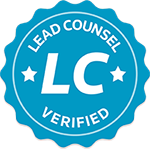Chapter 7 Has Income Limits
Video Transcribed: Edward Kelley here, a bankruptcy attorney in Oklahoma for Wirth Law, and today we’re going to discuss the question, am I a good candidate for bankruptcy in Oklahoma? So, first, you need to understand there are two kinds of, primarily two main kinds of bankruptcy that you will be dealing with as a debtor, meaning as a person that owes money. That’s a Chapter 7 or a Chapter 13. So, what’s the difference? Chapter 7 is a liquidation bankruptcy, popularly known as cut and run.
So, in this case, in Chapter 7 in Oklahoma, you’re going to walk away 90 days from the beginning of that bankruptcy with a discharge, and without liability for any of your debts, with a few exceptions, which we’ll get into later. Chapter 13 is, more of personal reorganization bankruptcy, meaning that you may pay some or all of your debts, but you’re going to structure a plan that makes it manageable for you, and that maybe can save your collateral, like your house or car if you’re behind.
So, those are the two different kinds and they’re appropriate to different situations. So, are you a good candidate for a 7? In this first video, and we’re going to do a series of five, we’ll look at the first fact, do you qualify?
 So, the government, the federal government, which all bankruptcies run through, the feds, it’s completely national federal relief. It’s not based on the rights of states, although state exemptions are used, which will also to talk about.
So, the government, the federal government, which all bankruptcies run through, the feds, it’s completely national federal relief. It’s not based on the rights of states, although state exemptions are used, which will also to talk about.
But Chapter 7 has income limits, and that’s based on IRS standards that come out, generally quarterly for household size. For example, you might have a household of just your one, or you might have you and your wife two, or three kids on top of that, five. There’s a table that anyone can access on the web. You just go to Department of Justice Means Testing for Chapter 7.
You know, it might take you a minute to Google around, but you can find a table that will say, state by state, and it varies by each state, and it’s just based on tax info and other info that they gather, what the cutoffs are. So, for example in Oklahoma for one person right now, it’s hovering around the mid-40,000.
So, 45,000 or below, you’d probably be fine, and you can add about 10,000 for each additional person. So, you got two people, 55,000, and bear in mind, this is the gross income, so that’s before any and all deductions.
However, you don’t need to include social security income and certain types of veteran benefits. So, for purposes of qualifying, you can act as if you don’t have those, although they will still come into play later.
But, if you are at 45,000 or below gross for one person or 10,000 more for each additional person, not including social security or VA benefits, then you’re over the first hurdle and you can file a Chapter 7. In the next video, we will look at whether you are a good candidate for Chapter 7, based on our type of debt.
So, I will see you then. As always, you can reach me at edward@wirthlawoffice.com, spelled just like it is there, or you can reach out to me directly at 580-478-3130, and I’m always up for helping you with your debt issues and getting you going with bankruptcy. So, I’ll see you soon with the next video in this series.




























